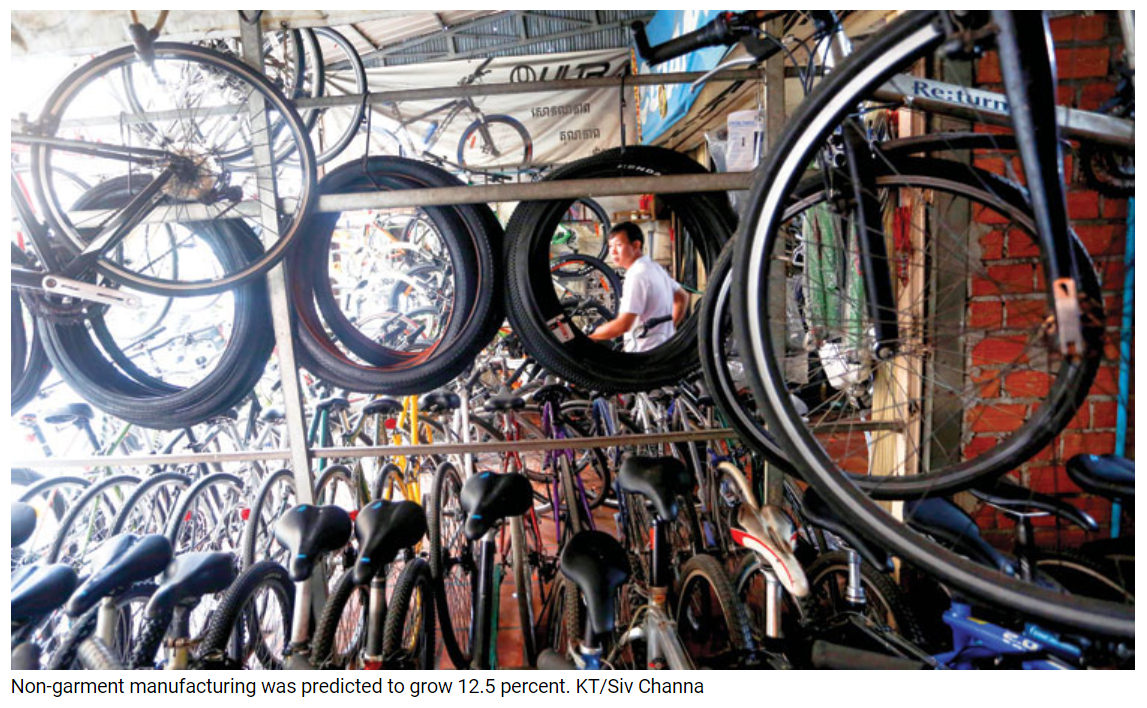Cambodia: Ministry ‘bullish’ on prospects of recovery
The Kingdom’s real economic growth is expected to recover by 4 percent in 2021 following a contraction of 3.1 percent in 2020, according to a report from the Ministry of Economy and Finance (MEF).
The report included 2021 sector-by-sector growth projections of 0.3 percent for hotels and restaurants, 4.5 percent for the garment industry, 2.9 percent for construction, 2.7 percent for real estate, 1.3 percent in agriculture and 12.5 percent in non-garment manufacturing.
Permanent Secretary of State at the Ministry of Economy and Finance Vongsey Vissoth said at the public forum on “Macroeconomic Management and Budget Law 2021” that not only is Cambodia’s gross domestic product (GDP) expected to grow this year by 4 percent, but that all sectors will see growth this year.
Vissoth shared that the 4 percent growth [projection] appears conservative in the ministry’s [estimation]because it sees the free trade deal with China, the Regional Comprehensive Economic Partnership (RCEP) agreement in the region and the soon-to be signed free trade agreement with South Korea as attracting more foreign direct investments into the country.
Among other bright signs pointing to economic growth in the Kingdom for the year ahead are reforms, the effective control of the COVID-19 pandemic by the government, its maintenance of social and economic stability, the increase in competitiveness and resilience-building as well as the issuing of the new law on investment and the law on public-private partnerships (3Ps). These domestically driven factors are augmented by the granting of the Everything but Arms (EBA) deal from the United Kingdom, the recovery of the US economy and the upcoming and ongoing roll-outs of vaccinations in Cambodia and across the globe.
Vissoth pointed out that although this year will see a recovery in the economy, the government recovery plan is still on its survival pillar, with the government committed to a step-by-step process of reform and building resiliency and trust among the public and businesses and investors,” he added.

The permanent secretary noted that countries with strong manufacturing, industrial and agricultural bases will be quicker to recover from the pandemic, while service-based economies will see a slow recovery in the post-COVID-19 period, adding that Cambodia’s agriculture sector can not only sustain the country, but also contribute to its exports.
“Manufacturing is [also] important. When a country has a strong manufacturing base it can recover more quickly post-crises,” he noted.
The National Bank of Cambodia (NBC) reported this week that the Kingdom’s balance of payments (BOP) saw a 1.7 percent surplus compared with its GDP in 2020. This growth was supported by the in-flow of foreign direct investments and the strength of Cambodian exports. The NBC attributed the rise in total exports (15.9 percent in 2020) as resulting from an uptick in gold, electronics, bicycles, milled rice and rubber shipments abroad.
Vissoth noted the International Monetary Fund has predicted that the COVID-19 pandemic may end in 2022 and therefore the government’s strategies, mechanisms and policies must align with this scenario.
He said that recovery rates of countries across the globe will be differ according to each nation’s individual pandemic situation and their efficacy in controlling it.
Vissoth said while Cambodia could not avoid the spread of COVID-19, the country did manage things well in terms of the disease itself and its social and economic impact.
He noted that in 2020, Cambodia changed its national strategy as often as needed in order to sustain the economy. Early 2020 saw Cambodia issuing an offensive strategy but that changed to a defensive approach in April 2020 that ultimately evolved into a survival strategy by July 2020.
The permanent secretary emphasised the government’s driving principles of restoring the economy post-COVID-19 from 2021 through 2023, as strategic pillars focused on survival, reform and resilience. The survival strategy has been designed to boost economic recovery and enable a continued battle with the virus.
Additionally, government strategies will be fashioned to stabilise peoples’ livelihoods, businesses and investments, particularly in vulnerable sectors as well as new sectors that have the potential to create more employment and support domestic consumption. Attention will also be paid to the potential need to react to rising expenses among those affected by the pandemic.
Source: https://www.khmertimeskh.com/50807772/ministry-bullish-on-prospects-of-recovery/


 English
English




